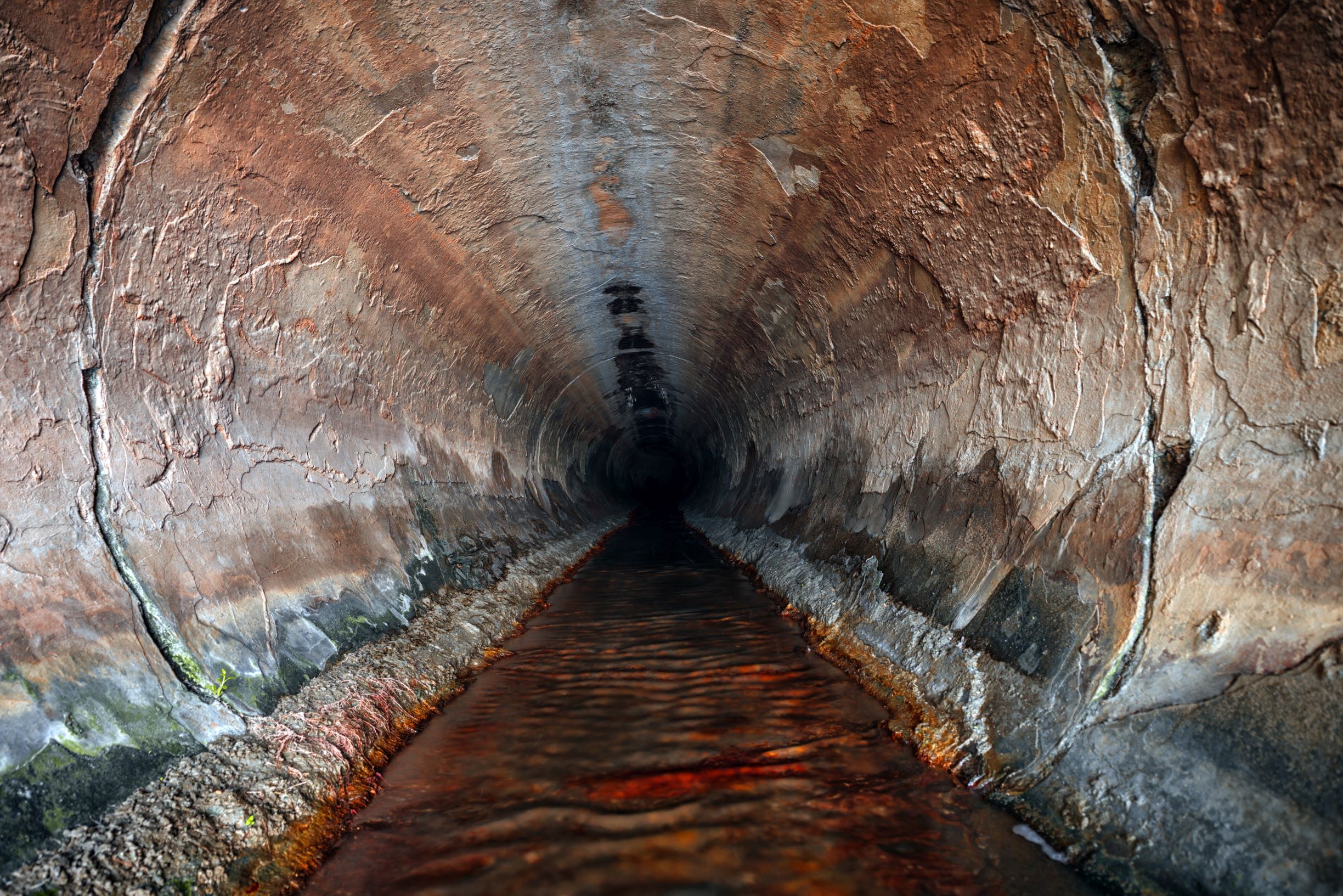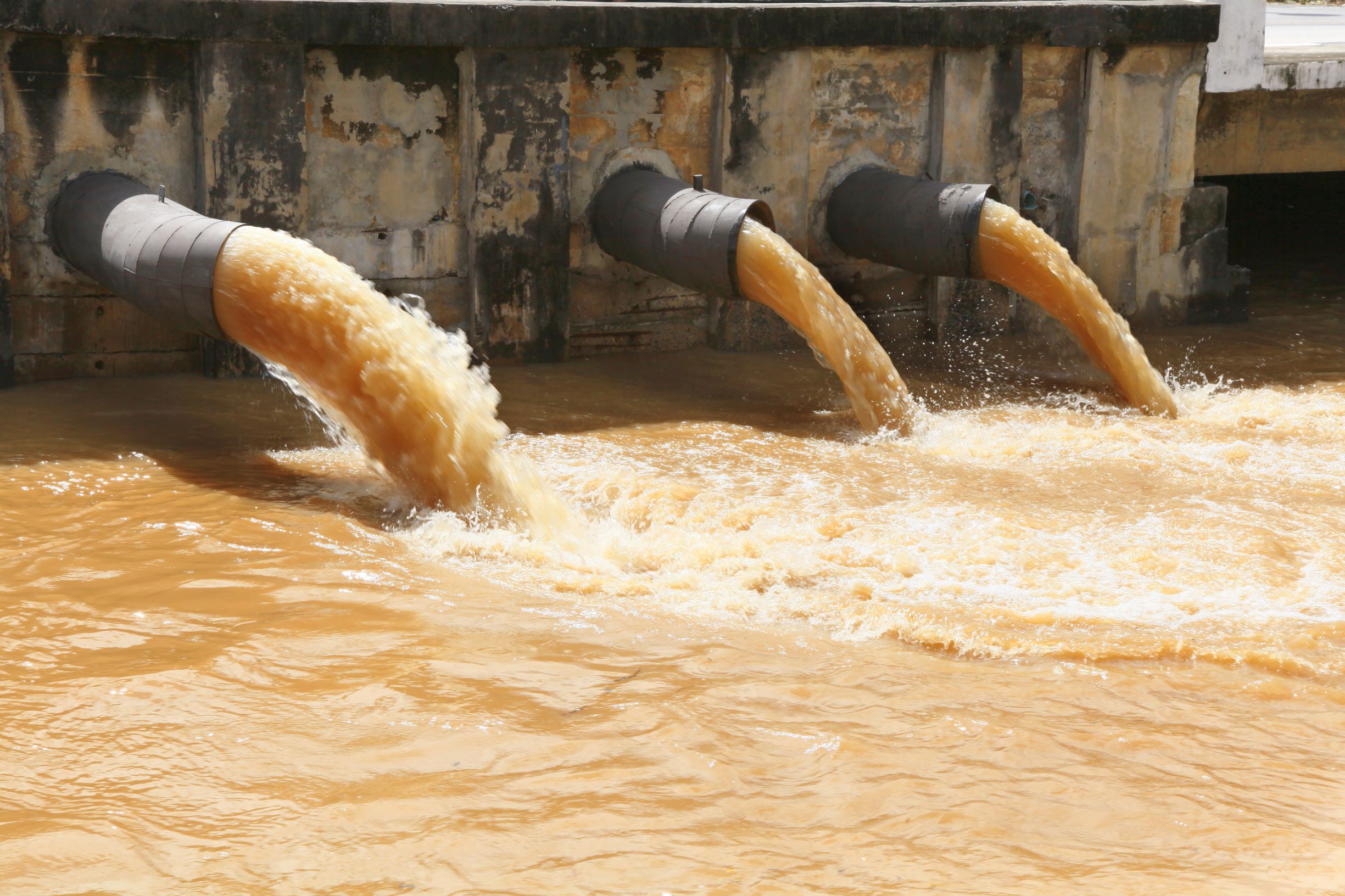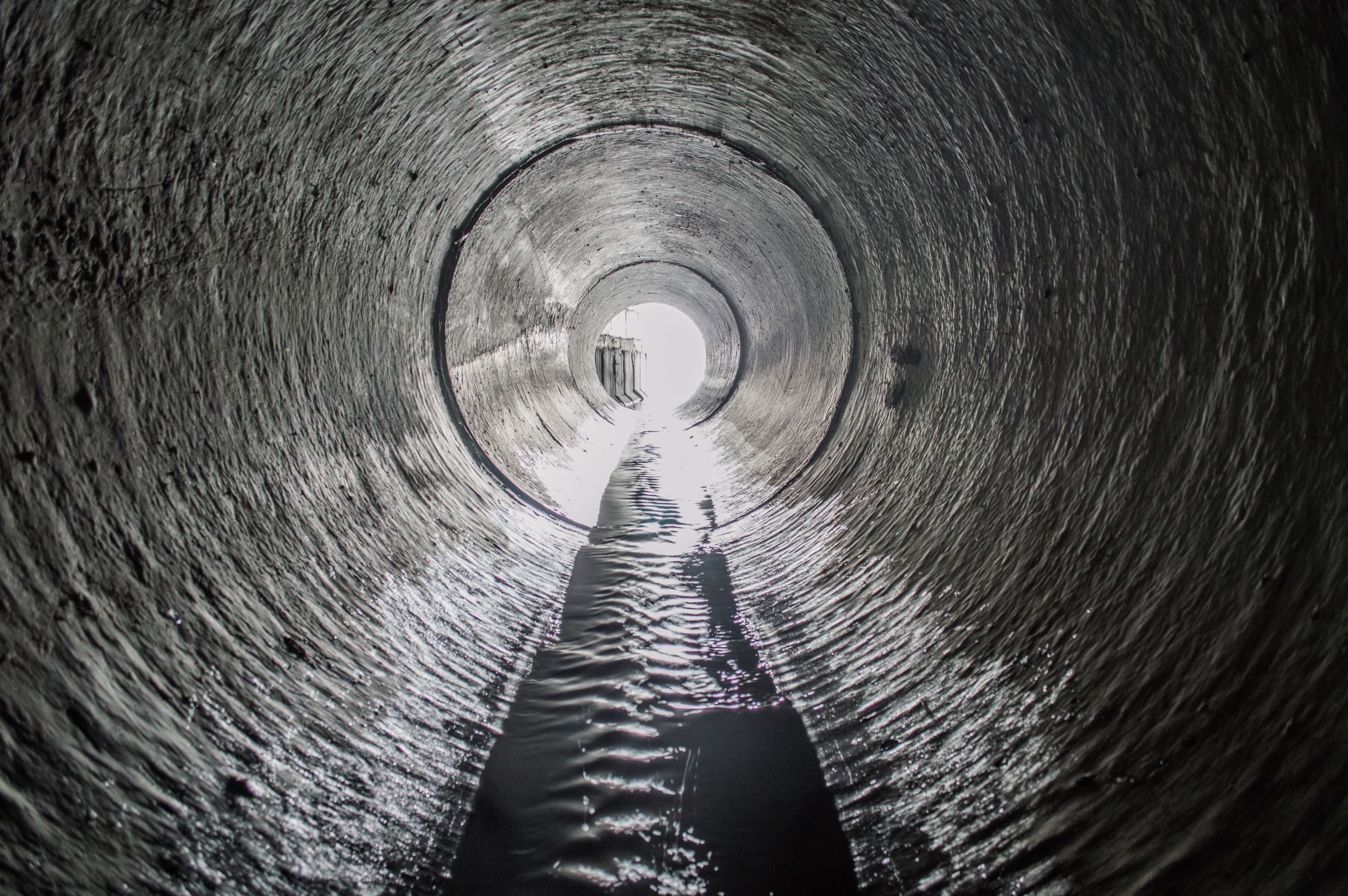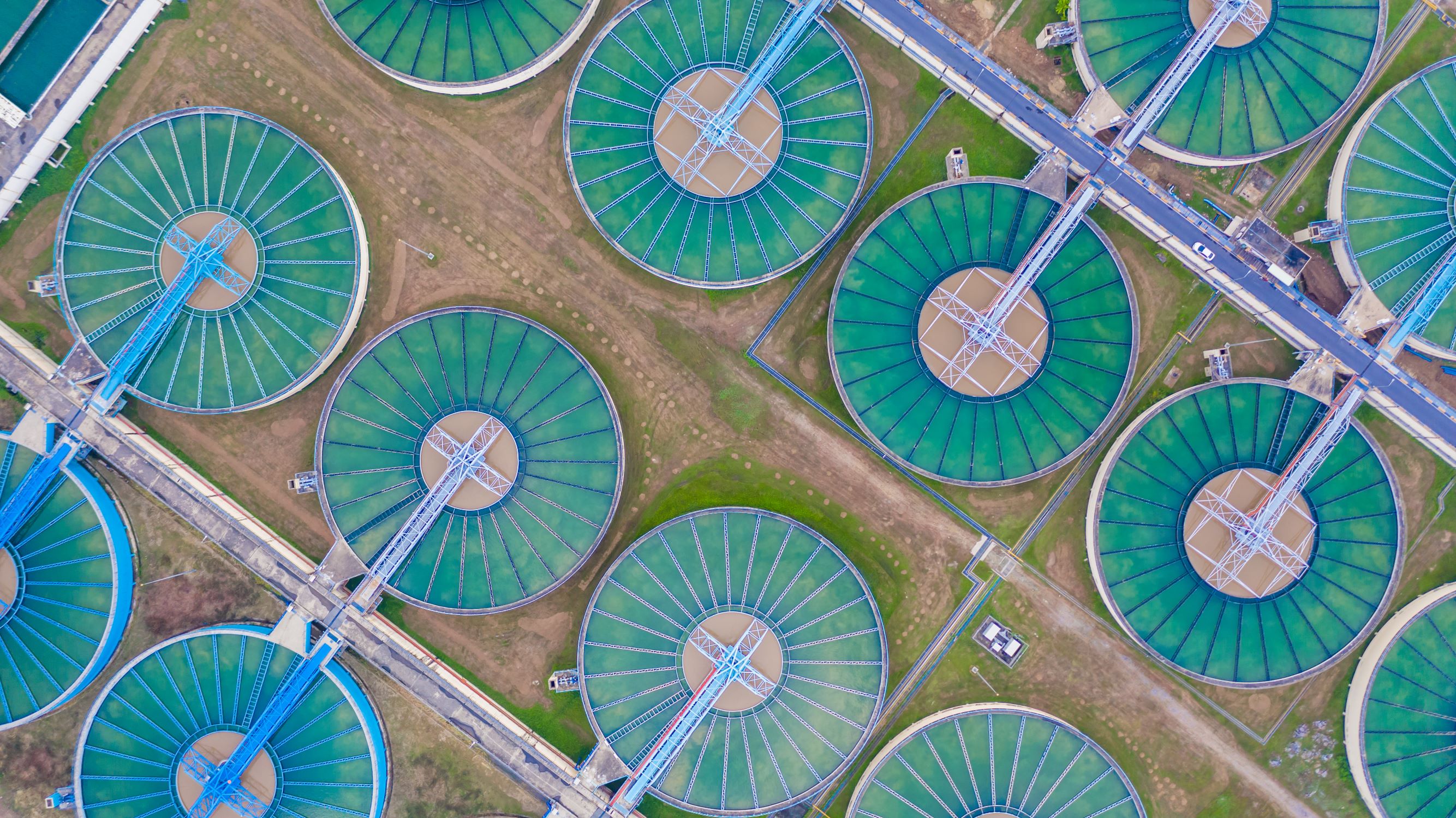The SANI®™ Process – A Paradigm-shift Technology for Hong Kong Sewage Management




Summary of Impact
From 2004 onwards Prof Guanghao Chen developed a completely new sewage treatment using sulphidogenic anaerobic organic conversion and autotrophic denitrification for saline sewage treatment, leveraging the sulphate originating from the practice of using seawater for toilet-flushing in Hong Kong. In 2013–2015 the first full-scale-level demonstration plant at Sha Tin Sewage Treatment Works (STSTWs) (1,000 m3/day) in Hong Kong proved the treatment achieved significant reductions in sludge (70%), energy (20–30%) and space (40%) compared with existing STWs. The technology has been adopted by the local sewerage authority of the HKSAR Government, namely the Drainage Services Department (DSD).
Underpinning Research
Technological Innovation
Prof Chen’s innovative sewage treatment technology, the Sulphate reduction Autotrophic denitrification and Nitrification Integrated (SANI®™) process, greatly minimizes the need for sludge disposal. In the SANI®™ process, conventional organic oxidations by oxygen and nitrate (the main energy consumers and sludge producers), are changed to sulphidogenic anaerobic organic conversion (the lowest energy consumer and sludge producer). This produces sulphide to induce autotrophic denitrification (a low sludge producer), while only the nitrification (the lowest sludge producer) remains unchanged. This process has thereby improved the previous century-long wastewater treatment methods with significant reductions in sludge, energy and space. Sulphur originating from saline sewage − the result of using seawater for toilet flushing in Hong Kong, first introduced in 1958 and capable of saving 22% of freshwater demand − acts as the electron carrier in this system. The sulphate offers an electron accepter for the anaerobic organic oxidation to CO2, with the by-product sulphide performing as an electron donor for the autotrophic denitrification, oxidizing the dissolved sulphide back to harmless sulphate. In this sulphur-cycle bioprocess, the large amount of CO2 generated becomes bicarbonate in water increasing the reactor pH to 7.5–7.8, at which level most of the sulphide stays in water – the beauty of this new technology. As only a minor portion of the electrons are involved in assimilative metabolisms in the organic conversion, the sludge yield turns out to be naturally minimal, thus saving sludge, energy and space.
Following a 500-day lab-scale trial treating synthetic saline wastewater with no waste sludge (because of all biodegradable organics used in the feed) [P1, P2, G1] (2004–2007), Chen’s research team then completed a 225-day 10m3/day pilot-scale trial [P3, G2] treating real saline sewage in Tung Chong, Hong Kong with little waste sludge generated (0.02kgVSS/kgCOD) ((2007–2009). In 2013–2017, the Chen’s team obtained further funding support to carry out a 1,000m3/day full-scale demonstration trial at the STSTWs in two phases: Phase I [P4, G3] for demonstration and Phase II [G4, G5] for plant optimization, further confirming significant sludge minimization at a real scale.
Further Development of the SANI®™ Process
Although the original concept of the SANI®™ process relies on the sulphate originating from seawater, sulphur compounds are also available in various sources, such as acid mine drainage, flue gas desulphurization waste, elemental sulphur waste, brackish water, and seawater infiltration, etc. The knowledge and technology of SANI®™ can be transferred to coastal and continental areas for applications without dosing with any sulphur chemical.[P5, P6, G7] China Everbright International Group is currently cooperating with Chen’s team on applications in Mainland.
Details of the Impact
A Paradigm-shift in the Urban Water Cycle
Water scarcity has been and will continue to be a longstanding worldwide major issue. At present, about 63% of the populations in Brazil, Russia, India and China are living under water stress. This will increase to 80% by 2030 unless new water management measures including wastewater potable reuse are introduced. However, since its introduction in the 1960s, the principal reactions of the conventional biological nitrogen removal process serving as the key vehicle for wastewater reuse has remained unchanged for half a century, namely carbon is oxidized to CO2 while nitrogen is reduced to nitrogen gas. In a typical wastewater treatment plant, 50–60% of organic carbon is converted to CO2 while the remaining 40–50% is left behind as sludge. Sludge treatment and disposal requires sludge thickening, digestion, dewatering, and incineration, contributing to 50% of the overall treatment cost; more importantly, it causes malodour and air pollution problems in surrounding communities.
In 2013–2017, Chen’s team obtained joint financial support of HK$36.6 million from ITF, DSD, and two local companies (New Epoch and Kinghome Environment) to carry out the first phase of the 1,000 m3/day full-scale demonstration trial at STSTWs. The demonstration plant was able to meet the effluent discharge standards while reducing biological sludge production by 70%, as well as saving 20–30% of energy consumption and 30–40% of plant space compared with STSTW. The plant optimization trial (second phase trial) further reduced plant space by 46–54%.[P4]
Based on these research outcomes, a Chinese national engineering research centre focusing on wastewater engineering was established in Hong Kong in 2015, approved by China Central Government and funded by ITF [G6] to promote the seawater toilet-flushing and SANI®™ technology as a smart water management system beyond Hong Kong. This new water system has been recognized by the International Water Association (IWA, the largest professional water research organization) as one of the most successful urban water systems in the world. In recognition of Prof Chen’s remarkable achievements on the underpinning research, he was recently elected a distinguished fellow of IWA, becoming the first Hong Kong scholar to receive this prestigious honour, the newly launched China National Innovation Pioneer Award.
Local Impacts
This research is led by Prof Chen’s research team, in collaboration with DSD, the Hong Kong Airport Authority (HKAA) and the Water Supplies Department (WSD). Dr Lee Tak Ma, former Director of WSD stated: "The SANI®™ Process perfectly integrates the freshwater system and seawater system. This innovative sewage treatment technology maps out an excellent plan for developing the seawater toilet-flushing system, as well as the reuse and recycling of saline sewage."
SANI®™ technology was also introduced by Mr John Tsang, the former Financial Secretary of the Hong Kong Government, in his blog as one of the five innovative technologies developed locally. A permanent SANI®™ plant is being built by DSD and HKUST for further demonstration of this novel technology, and prepared for larger-scale implementation.
International Impacts
The technology attracted attention from the UNESCO-IHE (Institute for Water Education) (currently IHE Delft), the world’s leading institution in water research and education. It invited Prof Chen to join an EU-funded three-year project entitled ‘MAS AGUA PARA TODOS (More Water for All)’ as technical consultant at part of the partnership between HKUST and the UNESCO–IHE (PI: Prof Carols Lopez Vazquez). The project has been conducted in Cuba and involves a SANI®™ pilot demonstration for exploring the use of seawater for toilet-flushing in Havana. It is an excellent example of the reach, impact and relevance of HKUST’s research and development regarding global water management and environmental protection. Water shortage is a growing global problem today, and SANI®™ technology provides an energy-efficient and economical motivation to save water in coastal cities by introducing a saline/brackish water supply. SANI®™ technology is also being transferred to Mainland China and other parts of the world.
Improving Industry Knowledge and Public Engagement
This research has significantly contributed to industrial knowledge and stimulated public engagements (DSD, WSD). The findings are of local and international significance particularly in terms of alternative water resources, sewage treatment, and sludge reduction. Since 2009, Prof Chen has delivered over 50 keynote/invited presentations on seawater toilet flushing and the SANI®™ process, providing interviews and facilitating coverage by numerous media, newspapers and TV channels – both in Hong Kong and overseas, as well as editing the world renowned book and IWA Publishing's bestseller – Biological Wastewater Treatment: Principles, Modeling and Design (2nd Edition).
References to the Research
Key outputs:
[P1] Wang, J, Lu, H, Chen, G.H.*, Lau, G.N., Tsang, W.L., and van Loosdrecht, M.C.M. (2009) A novel sulfate reduction, autotrophic denitrification, nitrification integrated (SANI) process for saline wastewater treatment. Water Research 43, pp 2363–2372.
[P2] van Loosdrecht, M.C.M., Brdjanovic, D., Chui, S., and Chen, G.H. (2012) A source for toilet flushing and for cooling, sewage treatment benefits, and phosphorus recovery: direct use of seawater in an age of rapid urbanization. Water 21, October 2012, pp 17-19.
[P3] Lu, H., Ekama, G., Wu, D., Feng, J., van Loosdrecht, M.C.M., and Chen, G.H.* (2012) The demonstration of a novel sulfur cycle-based wastewater treatment process: sulfate reduction, autotrophic denitrification, and nitrification integrated (SANI®) biological nitrogen removal process. Biotechnology and Bioengineering 109, pp 2778–2789.
[P4] Wu, D., Ekama, G., Chui, H.K., Wang, B., Cui, Y., Hao, T., van Loosdrecht, M.C.M., Chen, G.H.* (2016) Large-scale demonstration of the sulfate reduction autotrophic denitrification nitrification integrated (SANI®) process in saline sewage treatment. Water Research 100, pp 496–507.
[P5] Qian, J., Liu, R., Wei, L., Lu, H.*, Chen, G.H.* (2015) System evaluation and microbial analysis of a sulfur cycle-based wastewater treatment process for co-treatment of simple wet flue gas desulfurization wastes with freshwater sewage. Water Research 80, pp 189–199.
[P6] Xue, W., Hao, T., Mackey, H.R., Li, X., Chan, R.C., Chen, G.H.* (2017) The role of sulfate in aerobic granular sludge process for emerging sulfate-laden wastewater treatment. Water Research 124, pp 513–520.
Key grants:
[G1] Chen, G.H., A novel approach to minimize excess sludge production for Hong Kong sewage treatment. Research Grants Council. Value: HK$760,512. Period: 2004–2007.
[G2] Chen, G.H., Pilot trial of SANI process for sewage septicity control at Tung Chung Sewage Pumping Station. Drain Services Department. Value: HK$1,299,950. Period: 2007–2009.
[G3] Chen, G.H., Large scale trial of SANI process to realize its application in Hong Kong sewage treatment. Innovation and Technology Fund. Value: HK$24,650,000. Period: 2013–2015.
[G4] Chen, G.H., Public Sector Trial Scheme (PSTS) of large scale trial of SANI process to realize its application in Hong Kong. Innovation and Technology Fund. Value: HK$7,980,800. Period: 2015–2017.
[G5] Chen, G.H., SANI Pilot Tests under Sha Tin Sewage Treatment Works (STSTWs) Caverns Relocation. Drain Services Department. Value: HK$3,999,000. Period: 2015–2017.
[G6] Chen, G.H., Hong Kong Branch (HKB) of Chinese National Engineering Research Center (CNERC) for Control and Treatment of Heavy Metal Pollution. Innovation and Technology Fund. Value: HK$17,500,000. Period: 2015–2019.
[G7] Chen, G.H., Sulphur associated electron transfer theory-based novel treatment methods and processes. Natural Science Foundation of China (NSFC). Value: RMB3,600,000. Period: 2016–2021.